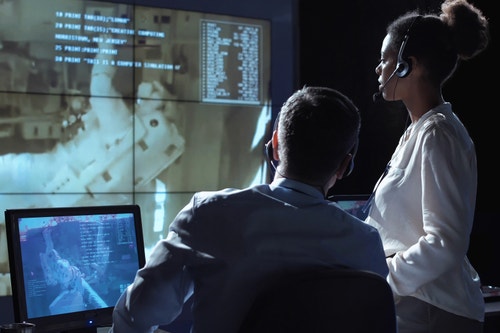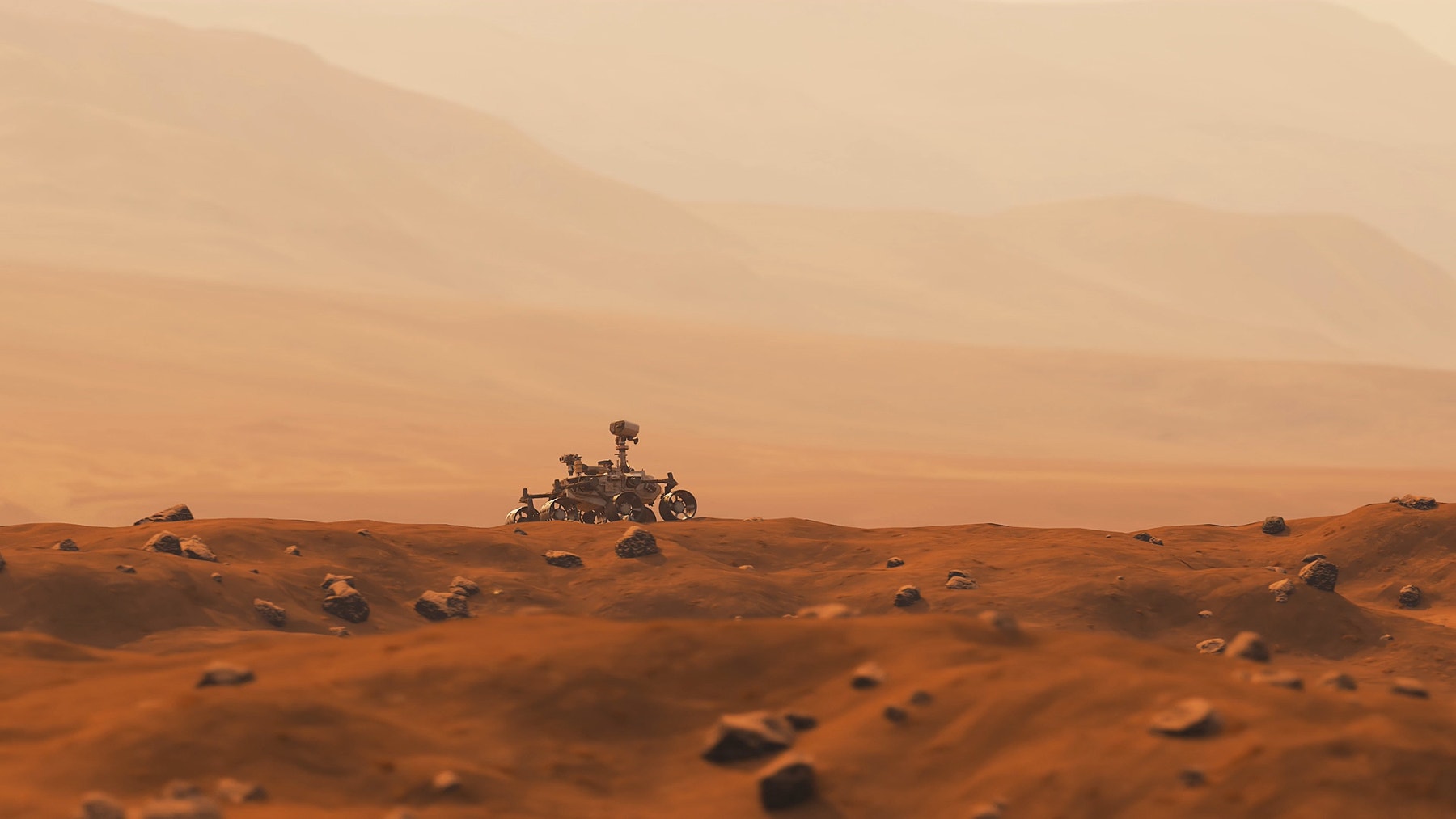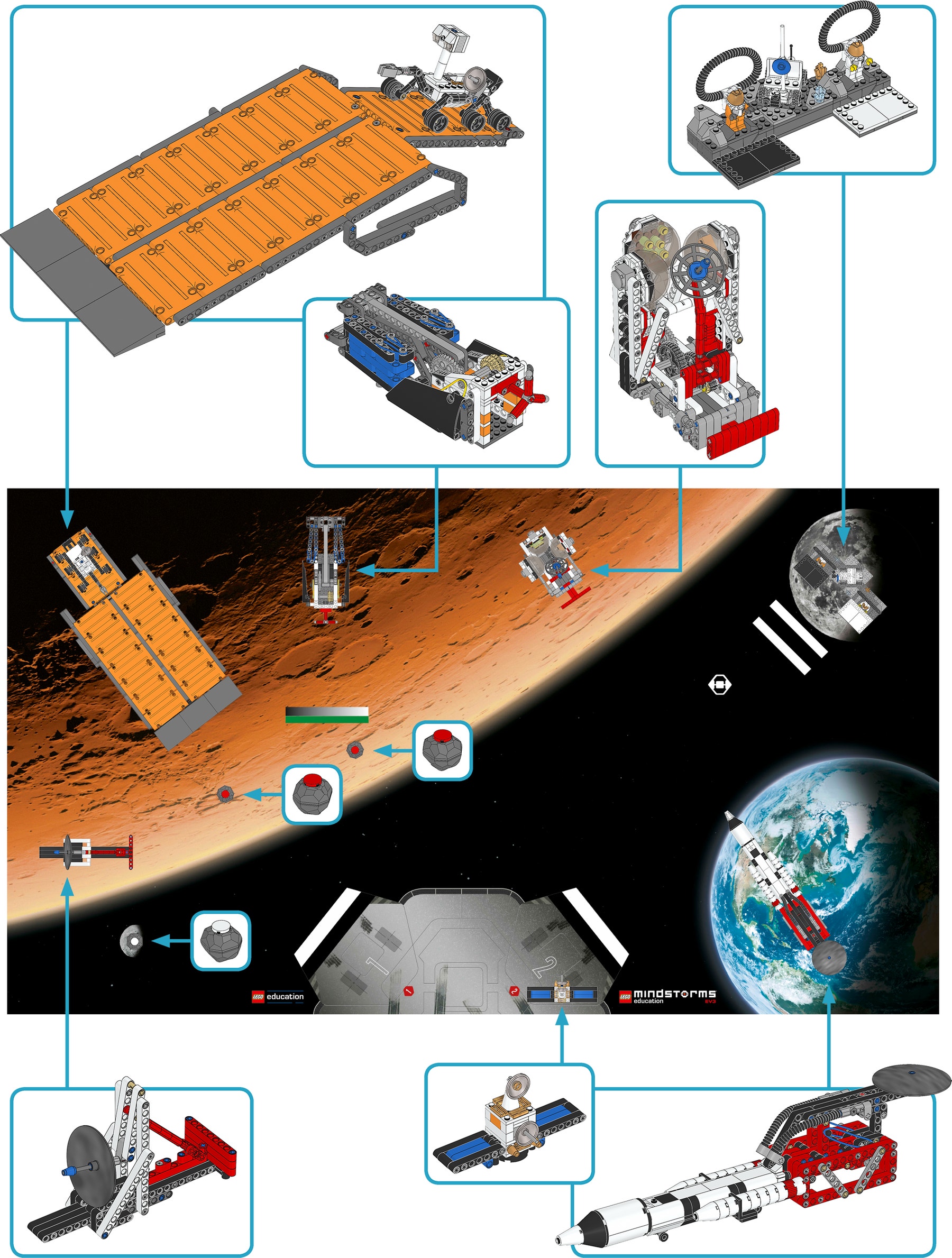Get Ready to Go to Mars
Get started with the Space Challenge.

Lesson Plan
1. Prepare
- Read through the student material in the EV3 Classroom App.
2. Engage (10 Min.)
- Watch the unit video and use the ideas in the Ignite a Discussion section below to engage your students in a discussion related to a human mission to Mars.
- Explain the rules of the Space Challenge, and it’s objective.
- Split your class into six teams.
3. Explore (25 Min.)
- Have your students build the models they’ll need for the Space Challenge. There are six groups of models. To equalize the workload, some teams will build multiple small models, while others will build a single big model.
- When the teams have finished building, ask them to set up their models on the Challenge Mat.
4. Explain (5 Min.)
- Have each team explain what role their model(s) could play in a human mission to Mars.
5. Elaborate (5 Min.)
- Encourage your students to come up with a plan for tackling the Space Challenge.
- Don’t forget to leave some time for cleanup.
- Keep the models intact after use, rather than taking them apart. Preserve them by wrapping them in cloth, paper, or bubble wrap.
6. Evaluate
- Give feedback on each student’s performance.
- You can use the assessment rubrics provided to simplify the process.
Ignite a Discussion
People have long been fascinated by Mars, the planet in our solar system that’s most like Earth. Uncrewed missions have sent orbiters, probes, and rovers to explore the planet since the 1960s, but what would it take to carry out a successful human mission to Mars?

Ask your students to think about these questions:
- What’s needed to support human life on Mars?
- How can robots help humans explore Mars?
- What could we learn from going to Mars?
- How could a space crew on Mars communicate with a mission control center on Earth?
Space Challenge Objective
Students are awarded a bronze, silver, gold, or platinum achievement badge for each mission they complete. The objective of the Space Challenge is to complete as many successful missions as possible before launching the rocket to the Mars Outpost in the final mission. Each mission comes with an objective and its own particular set of rules but there are five overall rules your students should know before they start:
- Complete as many missions as you can.
- You decide in which order you try the missions.
- You can try each mission more than once.
- The Initiate Launch mission is the final mission and ends the Space Challenge.
- The judge decides which achievement badges you’ll be awarded.
Building Tips
Building Instructions
These eight models make up the Space Challenge playing field:
Setting Up the Models
As they set up their models, give your students these tips:
- Make sure that each model has been built correctly and that all of their mechanisms operate as they should.
- To see how to set and reset models, refer to the last page(s) of the building instructions
- The Flight Crew, Crater, Solar Panel, Launcher, and Mars Outpost models use Dual Lock fasteners to keep them in place.
- Carefully apply the Dual Lock fasteners and place the model in the correct position on the Challenge Mat.
- Refer to the Challenge Mat overview for the correct placement of the models.

Differentiation
Simplify this lesson by:
- Helping your students as they apply the Dual Lock fasteners and place the models on the Challenge Mat
Take this lesson to the next level by:
- Encouraging your students to examine all of the models to learn how each of them operates
Assessment Opportunities
Teacher Observation Checklist
Create a scale that matches your needs, for example:
- Partially accomplished
- Fully accomplished
- Overachieved
Use the following success criteria to evaluate your students’ progress:
- Students were able to describe the role of their model(s) in a human mission to Mars.
- Students worked as a team toward a common goal.
- Students examined how their model(s) worked in order to come up with strategies for solving their first mission.
Self-Assessment
Have each student choose the achievement badge that they feel best represents their performance.
- Bronze: We’ve built and placed the model(s) on the Challenge Mat.
- Silver: We’ve built and placed the model(s) on the Challenge Mat and explained the role of our model(s) in a human mission to Mars.
- Gold: We’ve built and examined the model(s) on the Challenge Mat and explained the role of our model(s) in a human mission to Mars.
- Platinum: We’ve not only explained the role of our model(s) in a human mission to Mars, but we’ve also built and examined the model(s) on the Challenge Mat and came up with a plan for tackling our first mission!

Language Arts Extension
To integrate language arts skills development, have your students complete one of these research projects:
- How can humans survive in space?
- How do we generate energy for human outposts?
- How can robots help humans explore?
Note: This will make for a longer lesson.
Career Links
Students who enjoyed this lesson might be interested in exploring these career pathways:
- Manufacturing and Engineering (Pre-Engineering)
- Science, Technology, Engineering & Mathematics (Engineering and Technology)
Wsparcie dla nauczyciela
Students will:
- Learn about the models that are used in the Space Challenge
EV3 Space Challenge Set
EV3 Classroom App
EV3 Space Challenge Mat
Dual Lock fasteners
Common Core
CCSS.ELA-LITERACY.SL.7.1
Engage effectively in a range of collaborative discussions (one-on-one, in groups, and teacher-led) with diverse partners on grade 7 topics, texts, and issues, building on others’ ideas and expressing their own clearly.
ISTE
7C
Students contribute constructively to project teams, assuming various roles and responsibilities to work effectively toward a common goal.
Materiały dla uczniów
Arkusz dla ucznia
Download, view or share the student worksheet, either as an online HTML page or a printable PDF